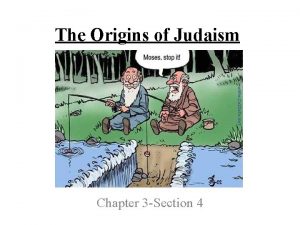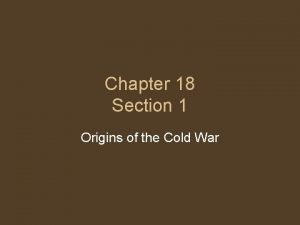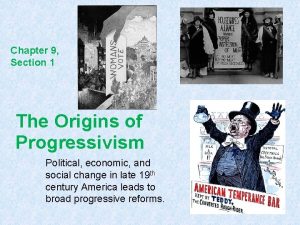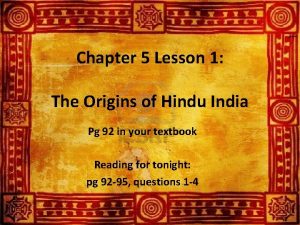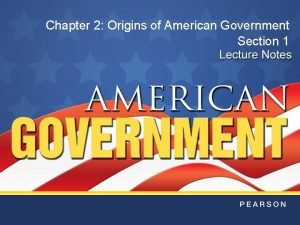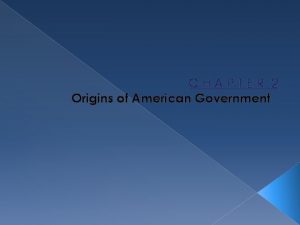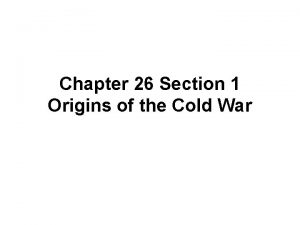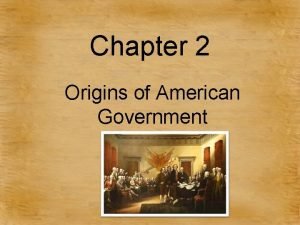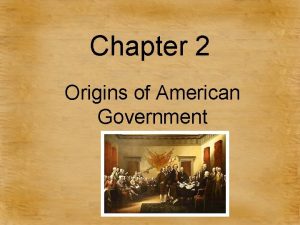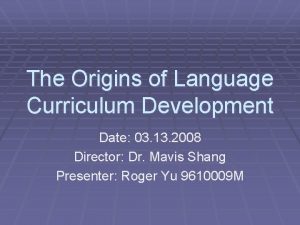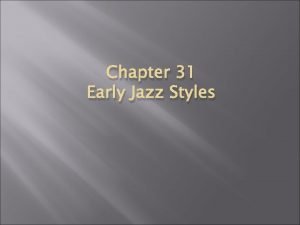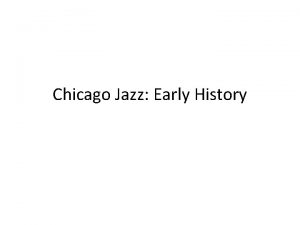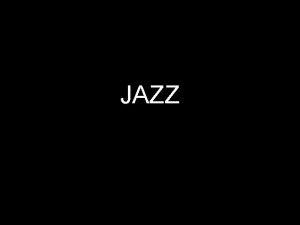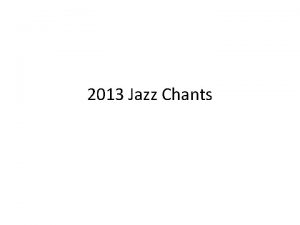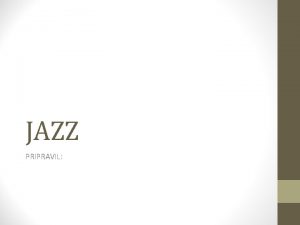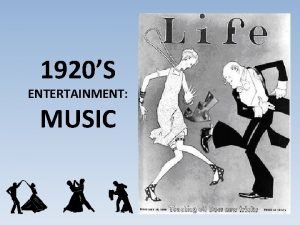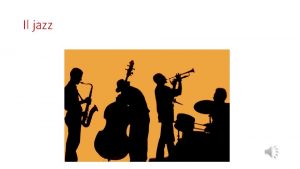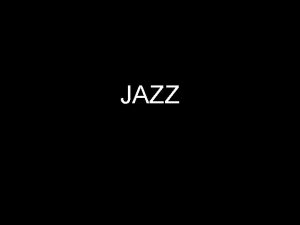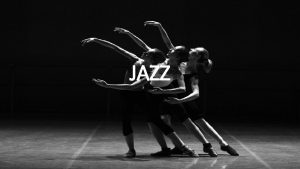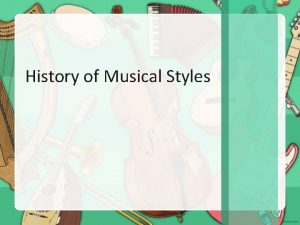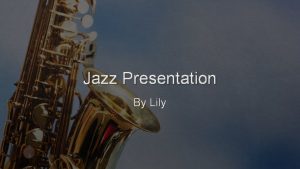Chapter 31 Early Jazz Styles Origins of Jazz




















- Slides: 20

Chapter 31 Early Jazz Styles

Origins of Jazz Origins of jazz cannot be chronicled • Not recorded; improvised, oral tradition Rooted in American South (New Orleans) • Combined characteristics of European and African music Jazz roots from West Africa • Communal, everyone takes part • Griots transmitted songs about their people and history

African Music Elements Call and response leader sings and group responds Polyrhythms multiple rhythm patterns played simultaneously Repetition of rhythm patterns provides stability amid polyrhythmic activity Harmony by-product of melodic combinations, not chords Scales 5 and 7 tone scales Instruments wide variety and use of percussion

Listening Guide: “Village Celebration, ” Mende tribe of Sierra Leone Recorded in 1962 African tribal music Moderate tempo No structured repeating sections Quadruple meter with polyrhythms Listening excerpt from CD 5, track 26, p. 295 Instruments: segbure (gourd rattle with bead netting sewn around outside); sangbei (wooden drum with metal rattles attached); mouth organ Voices: male vocal leader; villagers respond Lead vocals are improvised and villagers probably danced as they sang responses Listen to an excerpt from this recording:

Ragtime Syncopated (ragged) rhythms – African influence Sectional formal structure – European influence Ragtime

Ragtime Used as music for cakewalks in 1890 s Played on banjos, fiddles, or by bands Piano became preferred instrument Ragtime is notated, not improvised Notable composers were Scott Joplin, James Scott, and Joseph Lamb Scott Joplin 1868 -1917

Listening Guide: “Maple Leaf Rag” by Scott Joplin Composed in 1899 Piano ragtime music Tempo di marcia (march tempo) AABBACCDD form Solo piano Duple meter Listening excerpt from CD 6, track 1, p. 296 Rags were played on Mississippi riverboats and in homes and nightclubs Listen to the A and B sections (repeated) from this selection:

Blues Developed from field hollers and work songs in rural South Singers accompanied themselves with guitar Text is personal, full of feeling, not always sad Loose structurally and rhythmically; easy to improvise lyrics Twelve-bar harmonic progression with four bars for each section (3 -line verse: AAB) Typically quadruple meter

Blues Elements for Relaxed Feel Uneven beat subdivisions Singers slide from note to note Lowered 3 rd and 7 th scale steps -blue notes

Bessie Smith: Empress of the Blues Bessie Smith 1894 -1937 Photograph by Carl van Vechten Singing career in minstrel shows, nightclubs, & theaters Collaborated with jazz musicians in 1920 s and 1930 s Recorded close to 200 songs

Featured Listening: “Lost Your Head Blues” by Bessie Smith Recorded in 1926 Classic blues Five choruses of twelve-bar blues Bessie Smith with cornet and piano Quadruple meter with uneven beat subdivisions Listen to the first chorus (AAB) of this song: Listening excerpt from CD 2, tracks 2024, pp. 298 -299 Lyrics I was with you baby when you didn’t have a dime. Now since you got plenty money you have throw’d your good gal down. Listen for blue notes and sliding between notes Listen for call and response between voice and cornet

Jazz Centered in New Orleans Flourished in Storyville district Dance halls, gambling places, brothels Jazz also known as Dixieland Postcard of New Orleans, early 20 th century

New Orleans Jazz Combos Small groups: front line and rhythm section Front line played the melody • 1 or 2 cornets, clarinet, trombone Rhythm section maintained beat and accompanied • string bass, guitar or banjo; sometimes piano & drums Collective improvisation among front line members most important feature

Jazz Migration Several factors, including closing of Storyville, led to migration of jazz musicians Chicago became next important jazz city Focus shifted to individual soloists

Louis Armstrong Louis Armstrong, from New Orleans, became leading soloist His style became embodiment of swing Credited with development of scat singing – singer improvises nonsense syllables in place of words Inducted into Rock and Roll Hall of Fame as early influence Louis Armstrong 1900 -1971

The Swing Era Mid-1930 s to early 1950 s Larger ensembles organized Moved out of saloons to ballrooms and dance halls Radio broadcasts disseminated style to large audience New York became new jazz city

Big Band Swing Sound versus New Orleans Jazz Band Big Band Swing 1930 s-40 s 3 -4 trumpets 3 -4 trombones 3 -4 saxophones Piano String Bass Drum set New Orleans Jazz 1920 s 1 trumpet 1 trombone 1 clarinet Piano (guitar or banjo) String Bass Drum Set

Duke Ellington (1899 -1974) Born in Washington, DC Studied art & music, including ragtime Band performed at Harlem’s Cotton Club Called his band an orchestra; toured the US and Europe “It Don’t Mean a Thing If It Ain’t Got That Swing” recorded in 1932 DC residents selected Duke Ellington for their commemorative quarter; 2009 release scheduled

Listening Guide: “It Don’t Mean a Thing If It Ain’t Got That Swing” by Duke Ellington Composed in 1932 Swing jazz AABA song form Voice, trumpets, trombones, saxophones, piano, banjo, bass, drums Quadruple meter Listening Example on CD 6, track 2, p. 302 Trumpets have mutes to diminish sounds Listen to the entire song; notice the scat singing Lyrics It don’t mean a thing if it ain’t got that swing. It don’t mean a thing all you’ve got to do is sing. It makes no difference if it’s sweet or hot. Just keep that rhythm give it ev’rything you’ve got.

Other Swing Band Leaders Fletcher Henderson Count Basie Cab Calloway Benny Goodman Harry James Glenn Miller Artie Shaw Tommy Dorsey Woody Herman
 Jazz dance history
Jazz dance history Early cpr and early defibrillation can: *
Early cpr and early defibrillation can: * Chapter 15 origins of biological diversity answers
Chapter 15 origins of biological diversity answers The origins of judaism chapter 3 section 4
The origins of judaism chapter 3 section 4 Chapter 18 section 1 origins of the cold war
Chapter 18 section 1 origins of the cold war Origins of the cold war chapter 18 section 1
Origins of the cold war chapter 18 section 1 Chapter 2 origins of american government vocabulary
Chapter 2 origins of american government vocabulary The origins of progressivism chapter 9 section 1
The origins of progressivism chapter 9 section 1 Chapter 5 lesson 1 origins of hindu india
Chapter 5 lesson 1 origins of hindu india Chapter 2 origins of american government answer key
Chapter 2 origins of american government answer key Chapter 2: origins of american government worksheet answers
Chapter 2: origins of american government worksheet answers Chapter 26 section 1 origins of the cold war
Chapter 26 section 1 origins of the cold war Origins of american government chapter 2
Origins of american government chapter 2 Chapter 2 origins of american government
Chapter 2 origins of american government Excessive use of ornamentation and massive proportions
Excessive use of ornamentation and massive proportions Chapter 1 architectural styles
Chapter 1 architectural styles The origins of sociology
The origins of sociology Grammar selection and gradation
Grammar selection and gradation Kefir origin
Kefir origin Hunger games chapter questions
Hunger games chapter questions Historical origins of the health belief model
Historical origins of the health belief model



